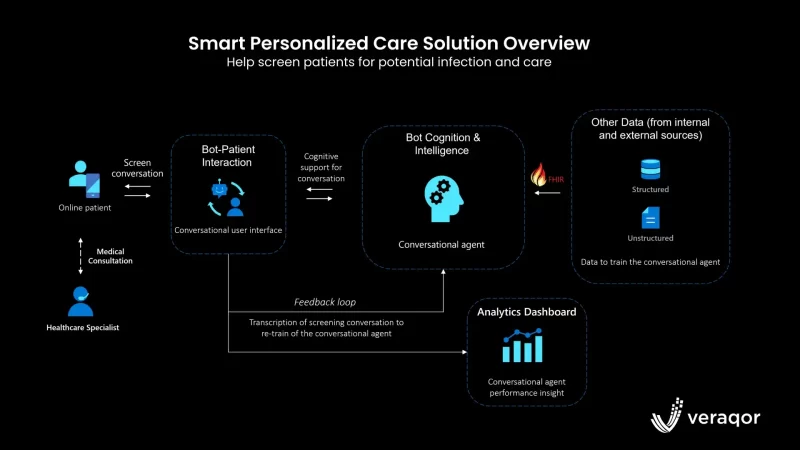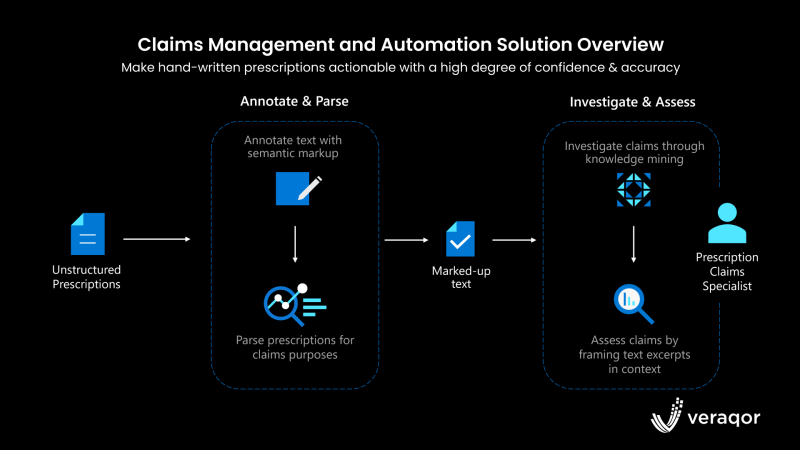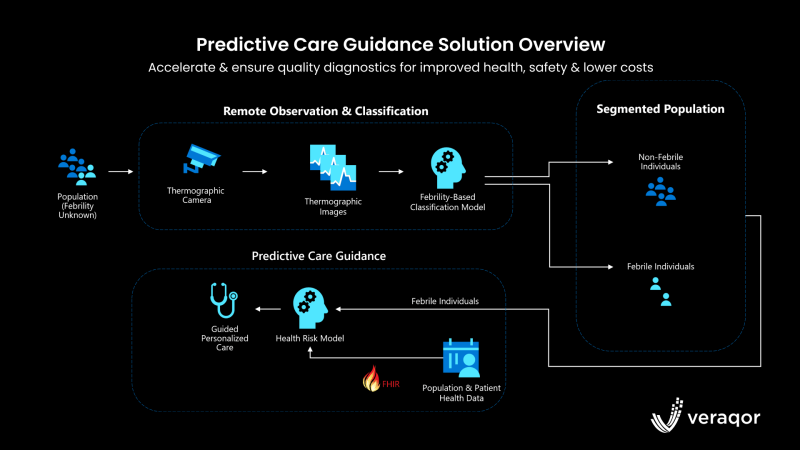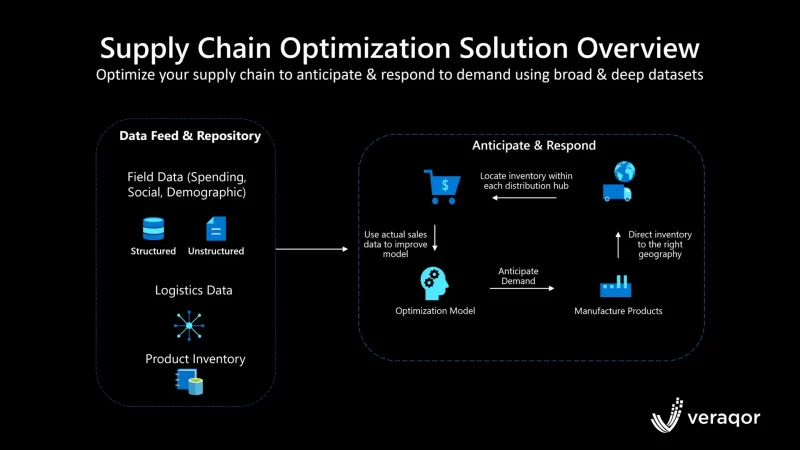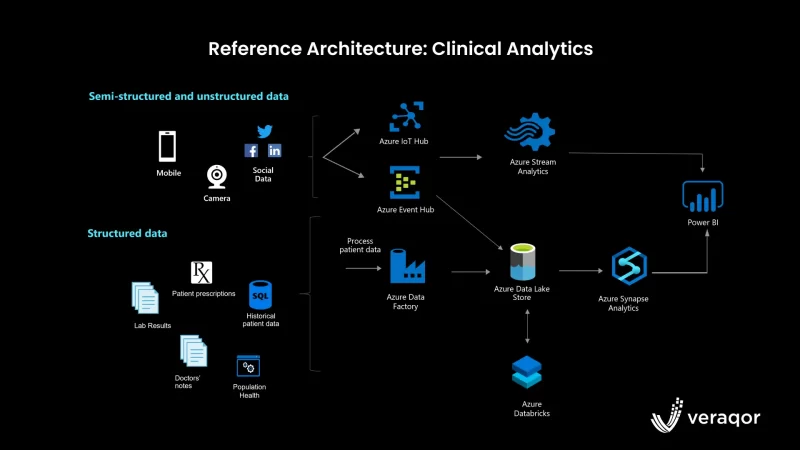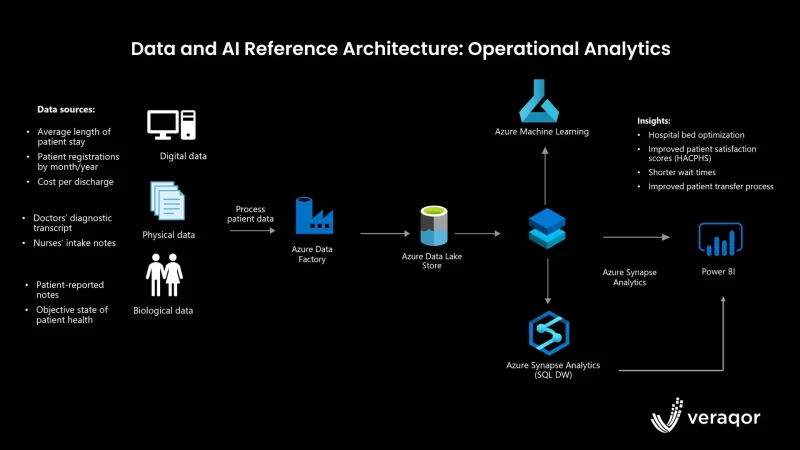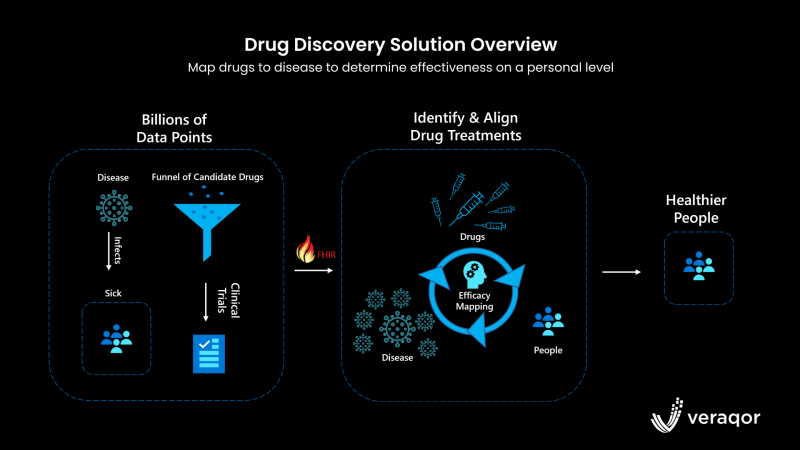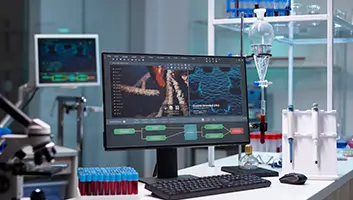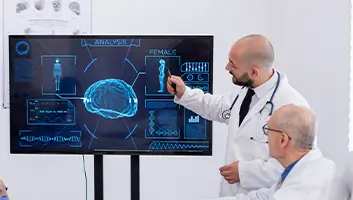Life Sciences Technology Solutions
Navigating the Digital Transformation of Life Sciences for Sustainable Growth
Overcoming the Biggest Challenges of Life Sciences
Costly Care Provision
- Rising Costs of Healthcare
- Limited Access to Healthcare
- Inefficient Use of Healthcare Resources
Ineffective Patient Coordination
- Fragmented Healthcare Systems
- Limited Patient Engagement & Empowerment
Poor Data Management
- Incompatible Data Formats & Standards
- Privacy & Security Concerns
Low Drug Quality
- Limited Patient Access to Drugs
- Rising Drug Prices
- Inefficient Drug Production Processes
Enhancing Patient Engagement and Improving Clinical Operations for Greater Scientific Innovation
Smart Personalized Care
An AI-driven approach that can quickly assess the symptoms and risk factors for people worried about infection, provide information and suggest the next course of action such as contacting a medical provider or, for those who do not need in-person medical care, managing the illness safely at home.
Key Benefits
Reducing emergency response time
Streamlining clinical workflows improves patient outcomes and satisfaction and enables providers to make informed decisions quickly based on real-time patient data
Reducing the high cost of providing better care
Enabling care providers to deliver better care and enhance patient engagement while reducing costs
Technical Capabilities
AI-Driven Personalized Care Solution
Automate patient data collection and generate real-time insights to provide more personalized care, automate administrative tasks like appointment scheduling, payments, and insurance claims processing.
Smart Personalized Care Trends
97% of all patients expect any healthcare institution to have full access to their medical history.
80% of consumers are willing to wear smart watches that measure health data.
50% of patients in the United States utilized virtual appointments in recent years.
77% of consumers book medical appointments online.
$27M is the expected growth in the wearable medical device market by 2023.
Continuous Patient Monitoring
Key Benefits
Facilitation for early detection of health issues
Better resource allocation and improved efficiency
Tailored intervention based on patient needs
Timely intervention by healthcare personnel
Improved patient safety and clinical outcomes
Improved patient retention and loyalty
Technical Capabilities
Real-Time Data Monitoring
Continuously monitor patient vital signs, physiological parameters, and health metrics in real-time, allowing healthcare providers with up-to-date insights into patient health status.
Remote Monitoring
Leverage remote monitoring technologies to extend care beyond traditional healthcare settings, improving patient access to care and engagement in their own ideal health management preferences or needs.
Interoperability
Seamless integration with existing health IT systems ensures comprehensive patient data management and interoperability, facilitating efficient information exchange across healthcare settings.
Automated Alerts and Notifications
Automated alerts and notifications notify healthcare providers of abnormal findings or critical events, facilitating timely interventions and improving patient outcomes. AI-driven features enable healthcare providers to be a step ahead in care provision.
Data Security and Compliance
With robust data security measures in place, ensure patient privacy and compliance with regulatory requirements for standards such as HIPAA, GDPR, and PIPEDA, safeguarding sensitive healthcare information and maintaining patient trust.
Continuous Patient Monitoring
Studies show Continuous Patient Monitoring can reduce emergencies requiring immediate medical attention by up to 86%, improving patient safety.
The market for continuous patient monitoring is expected to hit $21.6 billion by 2025, growing at a whopping 16.2% annually.
Research suggests a 19% reduction in hospital readmissions when Continuous Patient Monitoring is implemented, indicating improved overall patient outcomes.
Close tracking via continuous monitoring can slash hospital-acquired infections by 47%, according to research.
- Claims Management & Automation
- Predictive Care Guidance
- Supply Chain & Logistics Optimization
- Clinical Analytics
- Operational Analytics
Claims Management & Automation
Key Benefits
Intelligent healthcare systems enable efficient handling of large volumes of documents, provide real-time data access for analysis and insights, and automate data extraction, reducing manual labor costs and improving data accuracy. These solutions also streamline claim processing, help organizations identify areas for improvement, and make informed decisions.
Technical Capabilities
Form Recognizer
Transform large volumes of records into actionable data, digitize unstruectured documents, including handwritings, and go beyond OCR to classify type of documents, such as claims, insurance, invoices, contracts, and extract field names, and values.
Claims Management & Automation Trends
$6B is the yearly loss to data breaches amid growing pressures in security and compliance.
12 seconds is the time it takes for an RPA solution to check claim statuses (compared to 85 seconds it takes a human).
$68B fraud costs the nation’s healthcare payers annually.
$17B are the estimated savings per year by eliminating errors in claims.
$260B is the cost of claims denials annually for hospitals due to the complexity of claims management processes.
Predictive Care Guidance
Key Benefits
Predictive Care Guidance offers early disease detection, personalized care, and remote monitoring for patients, leading to improved population health management and reduced public health system burdens.
By identifying high-risk populations and targeting resources, it ensures safety in densely populated regions without compromising patient privacy. This approach results in improved patient outcomes, particularly in areas that are susceptible to diseases and viruses.
Technical Capabilities
Predictive Care Guidance
Leverage predictive analytics to anticipate potential health risks and suggest preventative steps accordingly. Utilize machine learning models to analyze medical images faster and accurately detect diseases resulting in improved patient outcomes and reduced costs.
Predictive Care Guidance Trends
By 2026, the size of the telehealth market is expected to surpass $187B.
Medical virtual reality will be worth $5B by 2025.
44% of all medicare primary care visits utilized telehealth rather than in-person visits.
47% of all healthcare organizations are already using patient data predictive analytics.
By the end of 2023, the projected global healthcare chatbots market will surpass $317M.
Supply Chain & Logistics Optimization
Key Benefits
Improved order fulfillment and promising
Enhanced logistics (tracking & traceability)
Efficient material sourcing and logistics
Increased efficiency
Sustainable load optimization
Improved product and service delivery
Reduced transportation costs
Better supply chain visibility
Technical Capabilities
AI/ML-based Inventory Management
Boost business resilience by quickly responding to disruptions and intelligently selecting alternatives for supply shortages.
Intelligent & Connected Demand Planning
Respond to changing market demand with machine learning, connected processes, and increased visibility across sales and operations planning (S&OP), forecasting, supply, replenishment, and inventory functions.
Real-time Orders and Shipments Tracking
Optimize logistics processes with visibility into goods in transit, notify stakeholders about deviations, and monitor fulfillment.
Supply Chain & Logistics Optimization Trends
The global O&G logistics market is expected to reach $14.6 billion by 2025 at a CAGR of 8.8%.
IoT, AI, and big data analytics can bring down logistical costs by up to 15%.
Optimizing supply chain and logistics processes can improve operational efficiency by up to 25%.
82% of oil and gas companies have increased their focus on supply chain resilience after the pandemic.
Clinical Analytics
Key Benefits
Proactive intervention to prevent hospitalization
Patient’s historical medical data to understand which treatments work for different persons
Prescriptive & predictive guidance that helps clinical teams provide better care
Technical Capabilities
AI-based Clinical Analytics for Better Care Provision
Leverage historical patient data to recommend the best treatment plan and reduce the need for patient hospitalization by detecting diseases resulting in improved patient outcomes and reduced costs.
Clinical Analytics Trends
The global healthcare analytics market is expected to reach $84.2 billion by 2027, growing at a CAGR of 23.4%.
In a recent survey, 62% of respondents said their organizations plan to invest more in clinical analytics over the next few years.
For the past few years, the US has accounted for the largest share of the global healthcare analytics market, with a market size of $16.2 billion.
60% of healthcare organizations have started using predictive analytics to improve patient health outcomes to speed up trials.
Operational Analytics
Key Benefits
Improve operational effectiveness and reduce costs
Predict disease surges and patient acuity, and leverage various care settings to ensure all patients are cared for
Empower clinicians to share information and analyze structured and unstructured data for accurate insights
Using data and analytics to improve the efficiency of systems and manage care processes
Technical Capabilities
ML-based Operational Insights for Clinics
Utilizing machine learning to streamline clinic operations for predictive diagnosis, improved care settings, and structuring data for actionable insights that ramp our profitability and reduce operational costs.
Operational Analytics Trends
The global market for healthcare operational analytics is projected to reach USD 4.6 billion in a couple of years.
The adoption of data visualization and operational analytics in healthcare is expected to grow at a CAGR of 9.9% from 2020 to 2027, reaching USD 2.1 billion by 2027.
The adoption of cloud-based healthcare analytics solutions is expected to reach $68 billion by 2026, growing at a CAGR of 27.3%.
The use of AI in healthcare analytics is expected to grow rapidly, with the market size projected to reach USD 68.5 billion by 2028.
Drug Discovery
Key Benefits
Technical Capability
Real-time Insights from Patient Data for Better Decision-making
Leverage predictive analytics to identify potential therapeutic targets and screen candidate molecules for further study. Utilize machine learning models to analyze existing medical data and improve understanding of disease mechanisms. Automate experimental processes such as laboratory research, clinical trials, and product testing. By leveraging these technologies, healthcare providers can speed up the drug development process while reducing costs.
Drug Discovery Trends
$2.6B is the cost that life sciences companies bear to introduce a single new prescription drug.
Over 2 billion people worldwide will be 60 or older by 2050.
Around 55% of Pharma/Life science executives cite a lack of skilled teams as a key obstacle to digital innovation.
6 out of 10 adults in the US have chronic diseases.
Industry Scenarios
Generating Business Value Across Industries
Enterprise solutions that provide real-time, actionable insights.
AI-powered chatbots and virtual assistants can help bridge the gap between the rising demand for healthcare services and the limited number of healthcare providers. These can provide patients basic medical advice, triage, and other non-emergency services. It can also save valuable time for healthcare providers, allowing them to focus on more complex cases and ensuring that patients timely receive the care they need.
Leveraging AI and ML algorithms can help healthcare providers make sense of this vast amount of data, providing insights into patient outcomes, identifying patterns and trends, informing diagnosis and treatment recommendations, and managing the data better. These technologies can analyze large datasets of patient records, medical images, and genomic data to make these predictions and recommendations.
The advancements in computing power and declining hardware costs have opened new possibilities in the healthcare industry. High-performance computing clusters can run complex simulations and model diseases, drug interactions, and clinical trials. This can enable healthcare providers to make faster and more accurate decisions, leading to better patient outcomes.
Developing AI-powered algorithms can help healthcare providers optimize resource allocation, reduce waste, and improve operational efficiency in hospitals and healthcare systems. This can help reduce costs while improving the quality of care for patients. AI-powered algorithms can analyze data from various sources, including patient records and supply chain data, to identify zones where costs can be reduced without sacrificing patient care.
Collaboration and data sharing across multiple organizations are increasingly important in today's healthcare industry. Establishing collaborative data-sharing platforms and networks can enable seamless data exchange and analysis across hospitals, research institutes, and pharmaceutical companies. This can accelerate research, improve treatment outcomes, and help identify new approaches to healthcare challenges.
Developing new drugs or vaccines is time-consuming and costly for pharmaceutical and biotech companies. The use of AI technology can help expedite the drug discovery and development process. AI-powered algorithms can identify potential drug targets, predict drug efficacy and safety, and optimize clinical trial design, leading to faster drug development timelines and better patient outcomes.
See How Organizations Are Innovating

Developing a “digital companion” to save lives
Situation
Solution
The prototype solution was based on the Internet of Things (IoT). The system captures and sends data from a patient’s fitness band or tiny wearable sensors to the cloud.
There, IoT and other services transform disparate medical data into easy-to-read summative dashboards and key performance indicators (KPIs), which users and their physicians can view from a mobile app or a web portal.
Impact
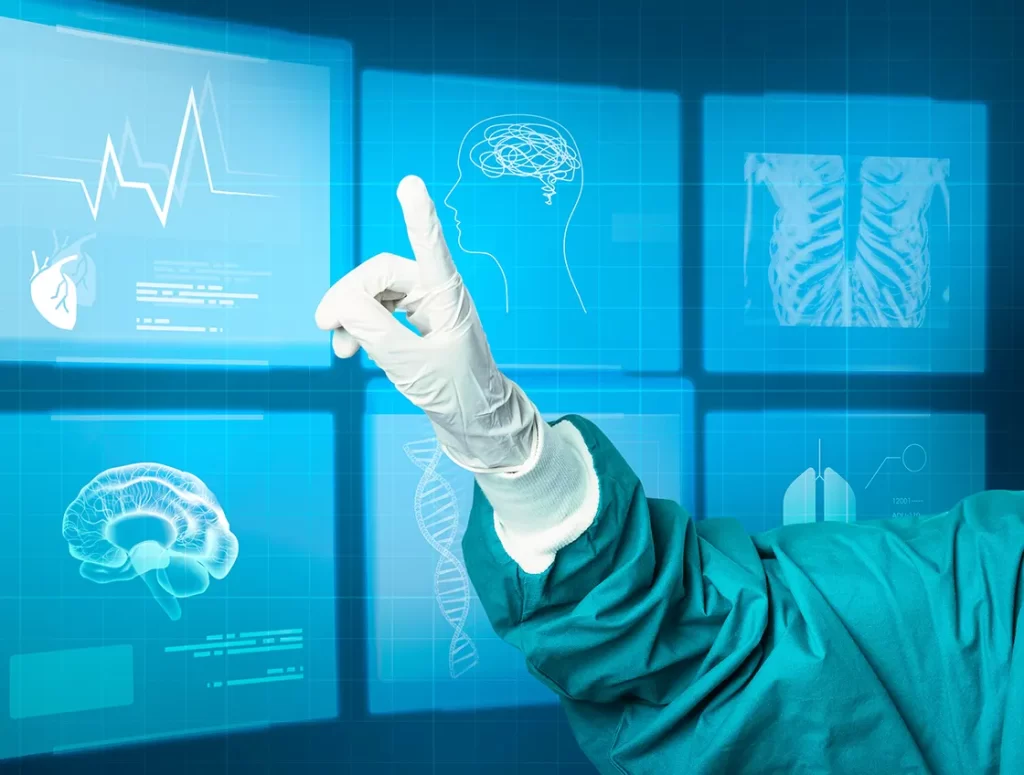
Saving lives and money for 10 million patients with machine learning
Situation
This healthcare service provider was looking for a smart system to help predict high-risk patients in order to intervene through preventive healthcare, optimize care quality, and reduce the cost and variance of care delivery across the network.
Solution
Impact

Enabled easy interaction of physicians with each other and patients from anywhere using virtual health
Situation
Solution
Impact
- Streamlined patient workflow
- Telecollaboration among staff
- Provide online training to staff
- Easy sharing of expertise and files anytime

Built in the cloud and made for the future
Situation
Clinicians had to log onto up to eight separate information systems to access the data they needed. Patient information was not integrated between different clinical areas, resulting in a disjointed view of the patient journey and a higher risk of errors. Patient records were held in paper storage, making it difficult for patients to access them.
Solution
The solution stores and manages digital records in the cloud and produces a single view of each patient. The organization has also integrated many other core applications, and now supports tablets to enable clinical teams to access data from anywhere.
Impact
- Patients can view digital records from anywhere, communicate with the staff, and feel more empowered and in control.
- Time-consuming processes are now automated.
- Staff’s instant mobile access to information and the ability to diagnose and predict based on data is helping improve patient outcomes, reducing the risk of error, and enhancing efficiency.

